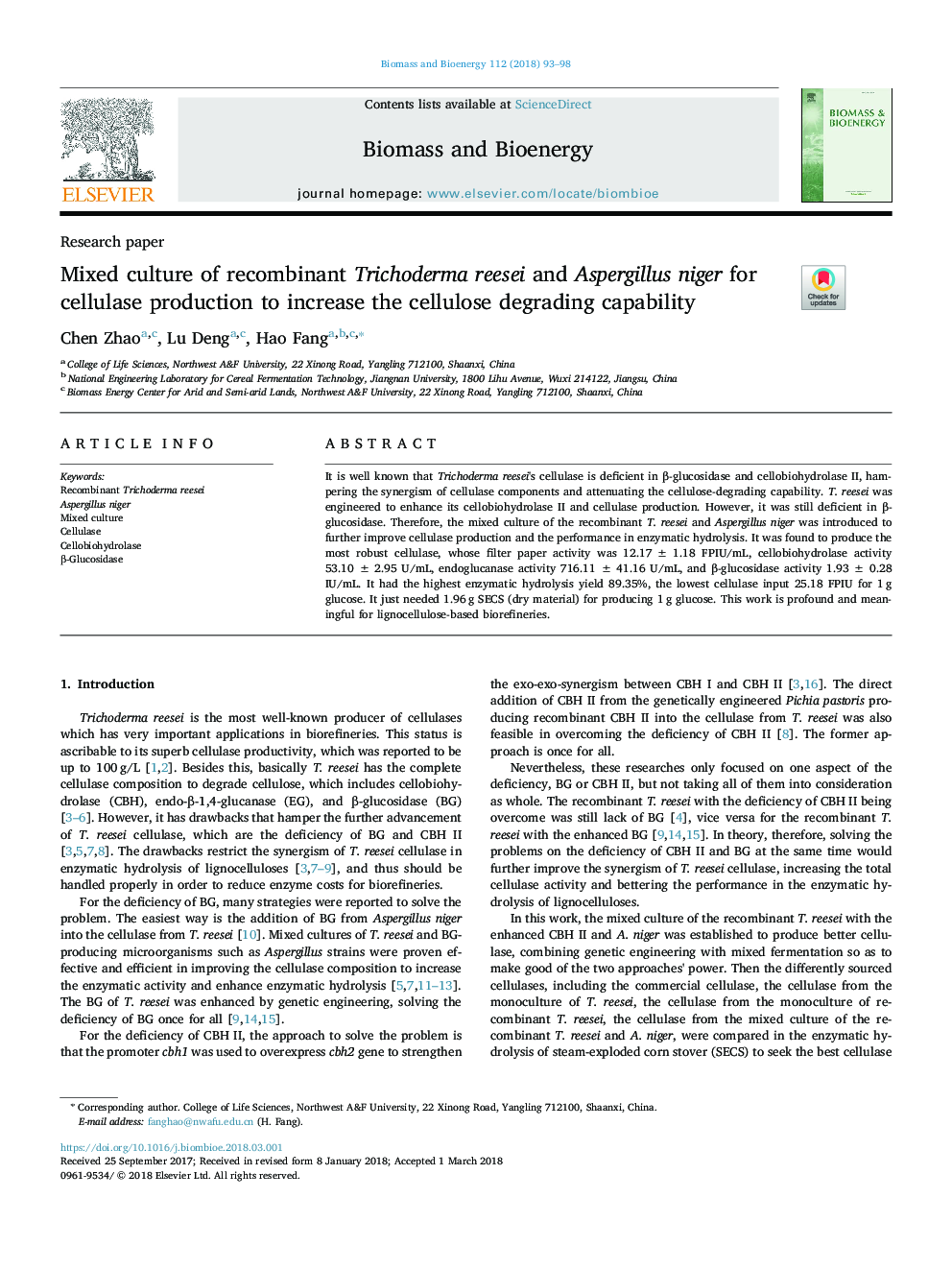| Article ID | Journal | Published Year | Pages | File Type |
|---|---|---|---|---|
| 7062916 | Biomass and Bioenergy | 2018 | 6 Pages |
Abstract
It is well known that Trichoderma reesei's cellulase is deficient in β-glucosidase and cellobiohydrolase II, hampering the synergism of cellulase components and attenuating the cellulose-degrading capability. T. reesei was engineered to enhance its cellobiohydrolase II and cellulase production. However, it was still deficient in β-glucosidase. Therefore, the mixed culture of the recombinant T. reesei and Aspergillus niger was introduced to further improve cellulase production and the performance in enzymatic hydrolysis. It was found to produce the most robust cellulase, whose filter paper activity was 12.17â¯Â±â¯1.18 FPIU/mL, cellobiohydrolase activity 53.10â¯Â±â¯2.95 U/mL, endoglucanase activity 716.11â¯Â±â¯41.16 U/mL, and β-glucosidase activity 1.93â¯Â±â¯0.28 IU/mL. It had the highest enzymatic hydrolysis yield 89.35%, the lowest cellulase input 25.18 FPIU for 1â¯g glucose. It just needed 1.96â¯g SECS (dry material) for producing 1â¯g glucose. This work is profound and meaningful for lignocellulose-based biorefineries.
Related Topics
Physical Sciences and Engineering
Chemical Engineering
Process Chemistry and Technology
Authors
Chen Zhao, Lu Deng, Hao Fang,
